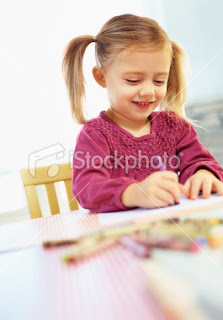Once the children have been provided with your sample and have listened to it being read, challenge them to each make a single letter book. It is often best to focus on familiar consonants or the first letter of the child's first name. Use of the first letter of a name invites children to develop a book that tells about themselves and the words that they find. This is an excellent way for the reading workshop aspect of teaching alphabetic principles to complement and enhance the writing workshop.
Encourage children to be active writers and readers by finding words for their book on the classroom word wall, in alphabet books in the special alphabet book bin, and in grade- and age-appropriate pictionaries (dictionaries for younger children that are filled with pictures).
Of course, the richest resource within the reading and writing workshop classroom for teaching and fostering the alphabetic principle lies in the use of alphabet books as anchor books for inspiring students’ writing. While young children in grades K-1 will do better with the single letter book authoring activity, children in grades 2 and beyond can truly be inspired and motivated by alphabet books that enhance their own reading, writing, and alphabetic skills.
Furthermore, use of these books—which have and are being produced in a variety of formats to enhance social studies, science, and mathematical themes—provides an opportunity for even young children to create a meaningful product that authenticates their content study while enhancing alphabetic skills and, of course, print awareness[SAW4]. Consider selecting an alphabet book that has a particularly inviting concept, art style, or adaptable format within the children's capacity to use as a model.
For example, author Tana Hoban uses actual color photographs of letters in her 26 Letters and 99 Cents. Children may want to make clay letters or create letter sculptures that develop their own "in style of” alphabet book similar to Hoban's. If nutrition is the science topic, children might want to examine Lois Ehlert's very
accessible Eating the Alphabet: Fruits and Vegetables from A to Z. This, combined with an examination of the fruits and vegetables in a local store (perhaps a pleasant walk from the school and a quick break from the routine local outing) can yield a wonderful alphabet book on fruits and vegetables that can also include those fruits and vegetables eaten in various cultures (e.g., mangos, plantains, pomegranates, etc).
The alphabet book can also offer the class a chance to work collaboratively within a template created by the teacher. Completion of this collaborative work can be shared with peers in another class and parents. It can also be kept as a model for the following year's class (of course, with the recognition and acceptance of the authors!).
Read More : Use of Reading and Writing Strategies for Teaching Letter-Sound Correspondence
